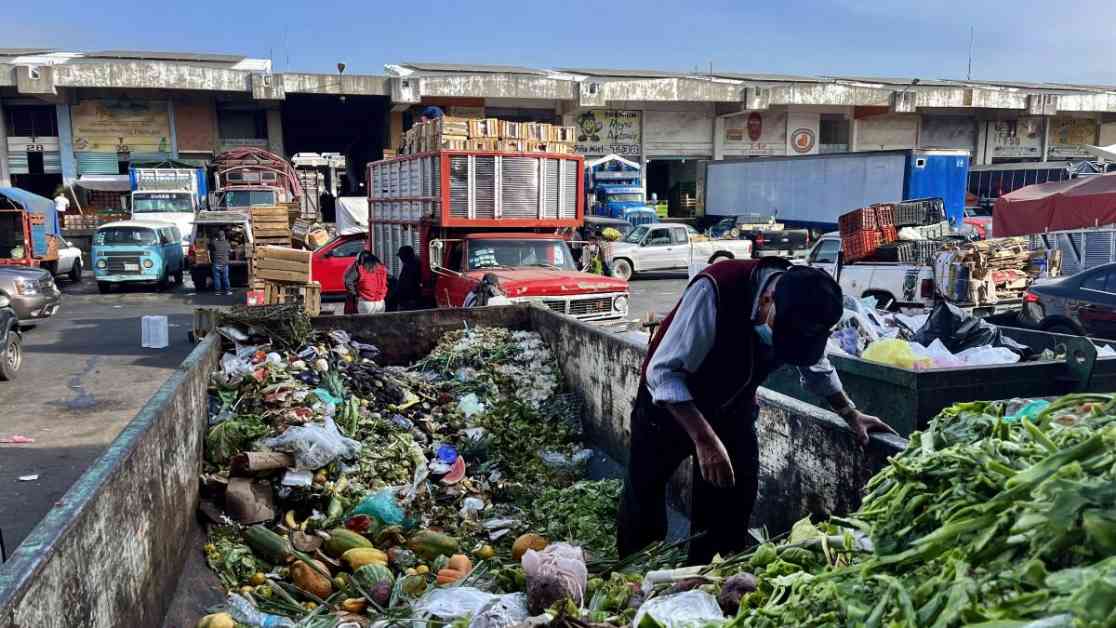Mexico City is home to one of the world’s largest wholesale food markets, Central de Abasto, where tons of fresh produce are delivered daily. However, a significant portion of this food, around 420 tons, goes to waste each day, contributing to the global issue of food waste. Globally, one third of all food produced is never eaten, amounting to over 1 billion tons annually. This waste leads to the release of methane, a potent greenhouse gas that contributes to climate change.
The United Nations estimates that up to 10% of human-produced greenhouse gases come from food loss and waste, which is nearly five times more than emissions from the aviation industry. While much attention has been given to reducing emissions from burning fossil fuels, addressing food waste is gaining more international recognition as a key factor in combating climate change.
At the recent United Nations climate summit, leaders signed a declaration urging countries to set targets for reducing methane emissions caused by organic waste. However, only a few of the 196 countries that signed the Paris Agreement have included food waste commitments in their national climate plans. Mexico, for example, is just beginning to evaluate how it can reduce the 20 million tons of food wasted annually in the country.
Efforts to reduce food waste are gaining traction, with initiatives like collecting produce that may not look perfect but is still usable and donating it to food banks and soup kitchens. By diverting food from landfills, these programs not only reduce waste but also provide meals to those in need. Environmental activists emphasize that reducing food waste is a feasible climate solution that is not as politically charged as other measures.
Food waste occurs at various stages, from production to consumption, and there are ways to address it at each level. Solutions include reducing overproduction, improving transportation systems, enhancing packaging to prolong food freshness, and educating consumers on proper food storage and consumption practices. Changing policies around food labeling can also help prevent consumers from discarding food unnecessarily.
Efforts to recover and redistribute food that is about to spoil can help address both food waste and food insecurity. Organizations like the Global FoodBanking Network work with food banks to redistribute surplus food, preventing it from ending up in landfills. Tools that measure food waste and the impact of avoiding it are essential for understanding the problem and implementing effective interventions.
While progress has been made in recognizing the impact of food waste on climate change, there is still much work to be done. Countries need to develop comprehensive strategies based on data to address food loss and waste effectively. By taking steps to reduce food waste, not only can we combat climate change, but we can also alleviate hunger and food insecurity in communities around the world.



























